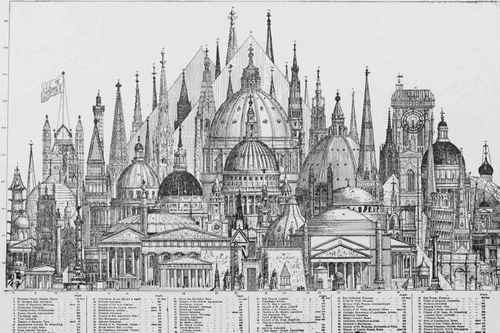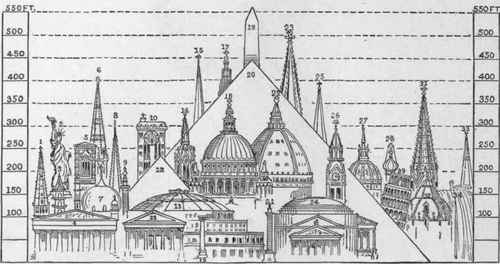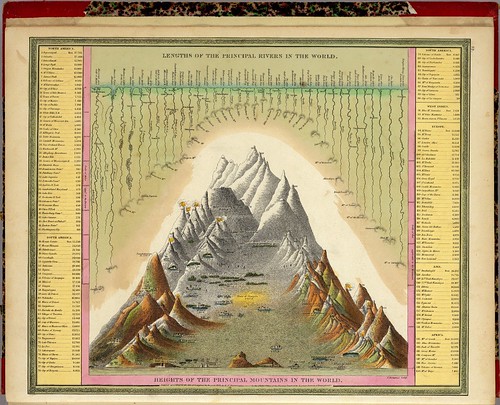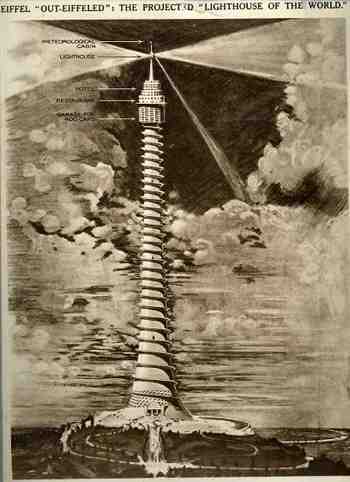JF Ptak Science Books Post 1675
The 1876 U.S. Centennial Exposition (formally called the "International Exhibition of Arts, Manufactures, and products of the Soil and Mines) in Philadelphia was a grand and fabulous showing of all things American, celebrating the hundreth anniversary of the signing of the Declaration of Independence. One of the crowning objects of the fair was to be the never-built 300-metre tall Centenniel Tower, pictured here in the 24 January 1874 issue of Scientific American. The structure appeared in relief against the background of other tall things built by humans, show in a relatively new fashion for displaying quantitative data comparisons in the same scale.

The practice of showing, say, the comparative heights of mountains and lengths of rivers by loading up all of the samples on one piece of paper for the ease of recognition was begun in the 18th century, but only rare; it began with some fits and starts in the 1820's again and then much more widely around mid-century, and seeming to peak at the end of the century before going somewhat dormant for the next few decades or so.
Another nice example of comparative heights of buildings:

And this as well:

[Source with key to the images found here, at Chestofbooks.com]
The excellent Bibliodyssey blog contributed a good healthy post on the subject of comparative heights of mountains map (here) with many fine examples of the art. Its a curious thing to me that the business of using same-scale comparisons in architecture is relatively new, coming (I think) as an invention of Etienne Durand in the 1840's.)
But getting back to the tower itself and it unbuiltedness, here's another example of an unbuilt tower--taller and bigger than the Centennial--which was proposed by Eugene Freyssinet (and which I wrote about earlier in this blog here):
Another in what is a long line of unbuilt towers would be this contribution by Vinnie Ream Hoxie (ca. 1874-6) which was his response to the finishing of the not-completed Washington Monument. Congressional sympathies towards spending money to complete the Washington Monument dried up to nothingness in 1856, just eight years after construction on the monument was begun. The consequence was that the monument was only a nubbin for several decades, standing about a third complete--it was Hoxie's idea no doubt to provide a sort of quick-and-dirty approach to finishing the project. Of course this looked like exactly what it was, and the idea died its own lonely death, thank goodness.

It had little appeal, at least to me. It is somewhat reminiscent of the exhibition of the completed forearm of the American Statue of Liberty, which as it turns out was also exhibited at Phildelphia in 1876, years before the completion of the rest of the statue. Short and stubby.
There are many other entries in the history of unbuilt towers, but their day will have to wait (for this blog, anyway).






Comments